Malayan Porcupine
- March 19, 2024
- 0 comment
The Malayan porcupine, scientifically known as Hystrix brachyura, is a fascinating rodent species found in various parts of Southeast Asia. Known for its distinctive appearance and impressive defense mechanisms, the Malayan porcupine possesses a coat of sharp quills covering its body, which it can erect and rattle when threatened. These quills serve as its primary means of protection against predators. Typically medium-sized, ranging from 60 to 90 centimeters in length and weighing between 5 to 10 kilograms, these creatures are primarily herbivores, feeding on roots, tubers, fruits, and vegetation.
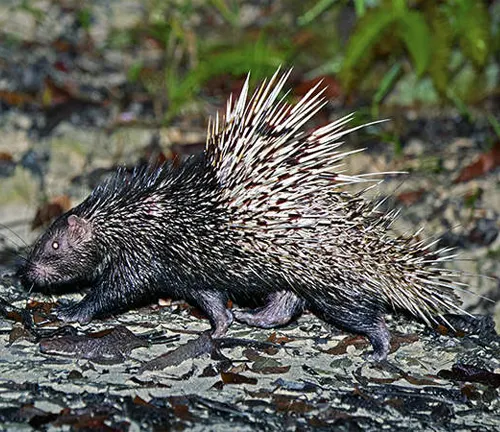
They are nocturnal animals, meaning they are most active during the night, venturing out under the cover of darkness to forage for food and seek mates. Despite their spiky exterior, Malayan porcupines play an important role in their ecosystems, contributing to plant dispersal and serving as prey for various predators. However, they face threats such as habitat loss and hunting, highlighting the need for conservation efforts to ensure their continued survival in the wild.
| Characteristic | Description |
|---|---|
| Scientific Name | Hystrix brachyura |
| Average Length | 60 to 90 centimeters |
| Average Weight | 5 to 10 kilograms |
| Coat | Covered with sharp quills |
| Primary Defense Mechanism | Erecting and rattling quills when threatened |
| Diet | Herbivorous, feeding on roots, tubers, fruits, and vegetation |
| Activity Pattern | Nocturnal, most active during the night |
| Habitat | Found in various parts of Southeast Asia, including Thailand, Malaysia, Indonesia, India, and China |
| Role in Ecosystem | Contributes to plant dispersal and serves as prey for various predators |
| Threats | Habitat loss, hunting, and human-wildlife conflicts |
| Conservation Status | Not currently classified as endangered, but populations are declining in some areas |
| Conservation Efforts | Habitat preservation, wildlife protection laws, community engagement initiatives |
Exploring the Fascinating World of the Malayan Porcupine
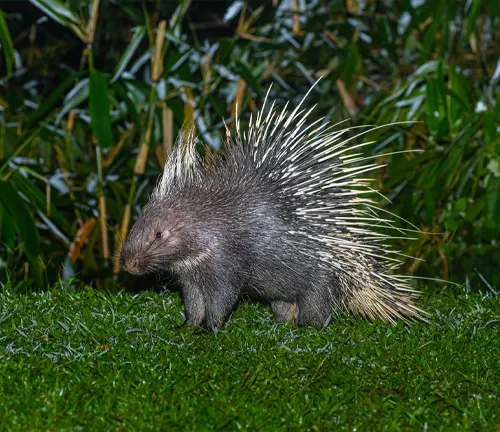
The Malayan Porcupine, scientifically known as Hystrix brachyura, is a captivating creature that inhabits various regions of Southeast Asia. With its distinctive appearance and intriguing behavior, this nocturnal rodent has captured the curiosity of many. Let’s delve into the intricacies of this fascinating animal and uncover what makes it truly unique.
Physical Characteristics
Size and Weight
The Malayan porcupine, also known as Hystrix brachyura, is a medium-sized rodent species native to Southeast Asia. On average, Malayan porcupines measure between 60 to 90 centimeters (about 24 to 35 inches) in length, with an additional 25 to 30 centimeters (about 10 to 12 inches) for their tails. In terms of weight, these porcupines typically weigh between 5 to 10 kilograms (about 11 to 22 pounds), although larger specimens have been recorded. Despite their size, Malayan porcupines are agile and well-adapted to their forested habitats, where they forage for food and seek shelter.
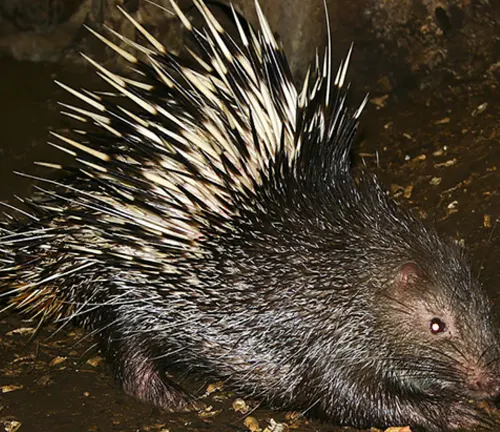
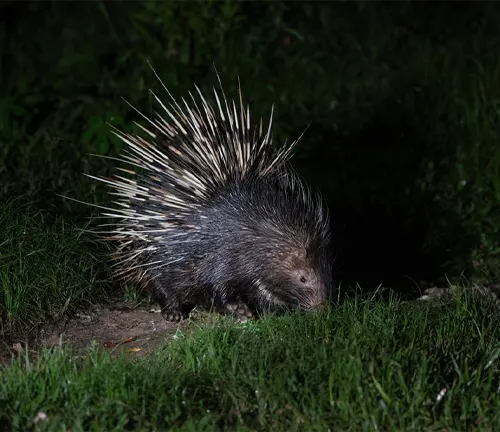
Quills and Defense Mechanisms
One of the most striking features of the Malayan porcupine is its coat of sharp quills, which cover most of its body. These quills serve as its primary defense mechanism against predators. When threatened, the porcupine can erect its quills, making itself appear larger and more intimidating. Additionally, it may also rattle its quills as a warning signal to potential threats. Contrary to popular belief, porcupines cannot shoot their quills. However, the quills are loosely attached to the porcupine’s skin and can easily detach upon contact with an aggressor. Once detached, the quills can penetrate the skin of predators, causing pain and discomfort. This defense mechanism serves as a deterrent to predators and helps the porcupine protect itself from harm while navigating its forest habitat.
Habitat and Distribution


The Malayan porcupine, scientifically known as Hystrix brachyura, is primarily found in various regions of Southeast Asia. This adaptable rodent species inhabits a diverse range of habitats, including tropical rainforests, dense woodlands, scrublands, grasslands, and agricultural areas. Within these habitats, Malayan porcupines seek out areas with abundant vegetation for foraging and shelter.
Their distribution spans across countries such as Thailand, Malaysia, Indonesia, parts of India, and certain regions of China. Within these countries, Malayan porcupines can be found in both mainland and island habitats, demonstrating their ability to thrive in different environmental conditions.
In their natural habitats, Malayan porcupines construct burrows or seek refuge in dense vegetation during the day to avoid predators and the harsh tropical sun. They are primarily nocturnal, meaning they are most active during the night when they venture out to search for food, including roots, tubers, fruits, and various types of vegetation.
Behavior and Lifestyle
Nocturnal Habits
Malayan porcupines are primarily nocturnal creatures, meaning they are most active during the night. This behavioral adaptation allows them to avoid predators and minimize exposure to extreme temperatures during the day. As the sun sets and darkness falls, Malayan porcupines emerge from their burrows or hiding spots to begin their nightly activities. Their keen senses, including sharp hearing and a well-developed sense of smell, aid them in navigating their surroundings in low-light conditions.

During the night, Malayan porcupines engage in various activities such as foraging for food, seeking mates, and maintaining their territories. Their nocturnal habits also serve as a strategy to reduce competition with diurnal species for resources such as food and shelter.
Diet and Feeding Behavior
Malayan porcupines are herbivores, meaning they primarily feed on plant matter. Their diet consists of roots, tubers, fruits, leaves, bark, and various types of vegetation found in their habitats. They are known to be opportunistic feeders, consuming a wide variety of plant species depending on seasonal availability and local abundance.
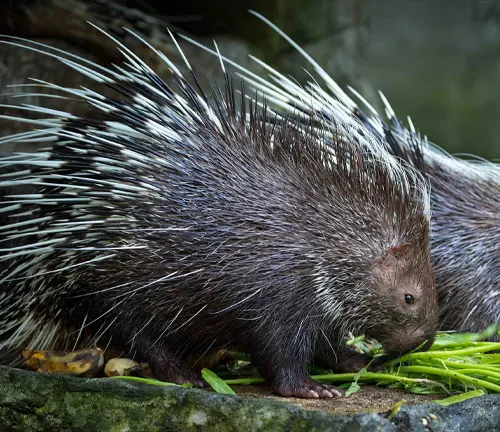
With their strong jaws and sharp incisors, Malayan porcupines are well-equipped to gnaw through tough plant material. They use their dexterous front paws to manipulate and grasp food items while feeding. Their diet and feeding behavior play a crucial role in shaping their ecosystems by influencing plant growth and distribution.
Despite their herbivorous diet, Malayan porcupines may occasionally supplement their diet with other food sources such as carrion or insects. However, plant matter remains the primary component of their diet.
Reproduction and Life Cycle
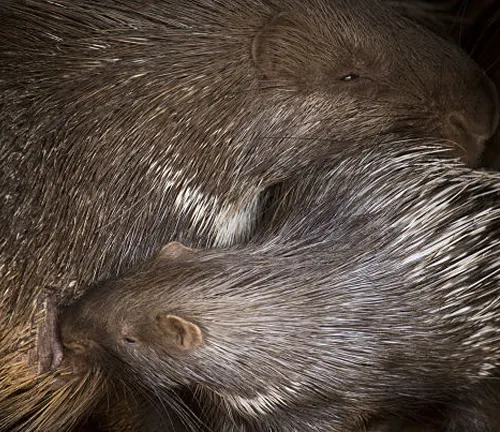
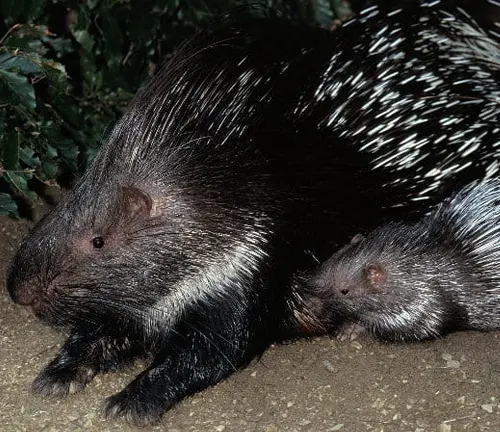
The reproduction and life cycle of Malayan porcupines are fascinating aspects of their biology, showcasing their adaptation to their environment and the challenges they face in maintaining their populations.
Breeding among Malayan porcupines typically occurs throughout the year, although there may be peak mating seasons influenced by factors such as climate and food availability. During the breeding season, male porcupines may compete for access to females through various displays of dominance and courtship behaviors.
Female porcupines, known as sows, have a gestation period of approximately 90 to 112 days. After mating, the female constructs a nest within a burrow or dense vegetation, where she gives birth to one to three offspring, known as porcupettes. These young are born with soft quills that harden within a few days, providing them with some level of protection from predators.
Porcupettes are precocial at birth, meaning they are relatively well-developed and able to move around shortly after being born. Despite this, they remain dependent on their mother for care and nourishment during the early stages of their life. The mother provides milk to her offspring, ensuring their growth and development.
As the porcupettes grow, they gradually become more independent, venturing out of the nest to explore their surroundings and learn essential survival skills. They reach sexual maturity at around one to two years of age, at which point they are capable of reproducing and continuing the cycle of life.
Interactions with Humans
Conservation Status
The conservation status of Malayan porcupines is of concern due to various threats to their populations and habitats. While Malayan porcupines are not currently classified as endangered species, they face significant pressures that jeopardize their long-term survival in the wild.
Habitat loss and degradation, primarily driven by deforestation, urbanization, and agricultural expansion, pose significant threats to Malayan porcupine populations. As their forest habitats are cleared for timber extraction, infrastructure development, and agricultural activities, the available habitat for porcupines diminishes, leading to fragmentation and isolation of populations.
Additionally, hunting and poaching pose direct threats to Malayan porcupines, as they are targeted for their meat, quills, and other body parts, which are sometimes used in traditional medicine or cultural practices. Unregulated hunting practices, coupled with increasing demand for wildlife products, exacerbate the pressure on porcupine populations and contribute to their decline.
Relationship with Indigenous Communities
The relationship between Malayan porcupines and indigenous communities varies across different regions and cultures. In some indigenous cultures, porcupines hold symbolic significance and are featured in folklore, traditional ceremonies, or spiritual beliefs. For example, porcupines may be regarded as symbols of resilience, protection, or wisdom in certain cultural narratives.
However, conflicts may arise between indigenous communities and porcupines due to factors such as crop damage or competition for resources. Porcupines may occasionally raid agricultural fields or forage in gardens, leading to tensions between humans and wildlife. In such cases, efforts to mitigate human-wildlife conflicts and promote coexistence are crucial for fostering harmonious relationships between indigenous communities and Malayan porcupines.
Educational programs, community outreach initiatives, and livelihood support projects can help raise awareness about the importance of conserving wildlife and provide alternative solutions for addressing human-wildlife conflicts. By involving indigenous communities in conservation efforts and respecting their traditional knowledge and cultural values, sustainable approaches to wildlife management and habitat conservation can be achieved.
Myths and Folklore Surrounding the Malayan Porcupine
Throughout history, the Malayan porcupine has been the subject of various myths, legends, and cultural beliefs across the regions where it is found. These myths and folklore reflect the deep-seated cultural significance of the porcupine in the collective imagination of communities in Southeast Asia.
In some cultures, the Malayan porcupine is associated with mystical powers and supernatural attributes. It may be depicted as a guardian spirit or a symbol of protection against evil forces. In certain folk tales, porcupines are revered for their ability to ward off danger and bring good luck to those who encounter them.
On the other hand, Malayan porcupines may also be portrayed as mischievous or cunning creatures in folklore. Stories abound of porcupines outsmarting predators or tricking unsuspecting characters with their cleverness and resourcefulness. These tales often serve as cautionary fables or moral lessons, highlighting the importance of wit and wisdom in navigating life’s challenges.
Additionally, the distinctive appearance of the Malayan porcupine, with its coat of sharp quills, has inspired various cultural motifs and artistic representations. Porcupines may be depicted in traditional art, textiles, and decorative objects as symbols of strength, resilience, or protection.
In indigenous communities, rituals and ceremonies may incorporate porcupine imagery or symbolism as part of spiritual practices or cultural traditions. Porcupines may be invoked as totems or spirit animals, representing qualities such as courage, endurance, or adaptability.
Overall, the myths and folklore surrounding the M
Importance in Ecosystems
Importance in Ecosystems
The Malayan porcupine plays a vital role in the ecosystems where it resides, contributing to ecological balance and functioning in various ways.
- Seed Dispersal: As herbivores, Malayan porcupines consume a diverse array of plant matter, including fruits and seeds. By ingesting seeds and subsequently dispersing them through their feces, porcupines aid in the propagation of plant species and contribute to the regeneration of forests and other vegetation communities. This process helps maintain biodiversity and ecosystem resilience.
- Vegetation Management: The foraging activities of Malayan porcupines can influence vegetation dynamics within their habitats. By selectively feeding on certain plant species and modifying vegetation structure through their browsing behavior, porcupines indirectly shape plant composition and distribution. This, in turn, can have cascading effects on other organisms dependent on these plants for food and habitat.
- Prey Base: Malayan porcupines serve as prey for various predators, including large carnivores such as leopards, tigers, and pythons. Their presence in the food web provides an important food source for these predators, helping to sustain their populations and maintain ecological balance. In this way, porcupines contribute to the stability and functioning of predator-prey relationships in their ecosystems.
- Soil Nutrient Cycling: Through their feeding activities and the deposition of their feces, Malayan porcupines contribute to nutrient cycling in their habitats. The organic matter in their feces enriches the soil with essential nutrients, promoting soil fertility and supporting plant growth. This process plays a crucial role in maintaining ecosystem productivity and resilience.
Conservation Efforts
Efforts to conserve the Malayan porcupine and its habitat are essential for ensuring the long-term survival of this species and maintaining ecosystem health in Southeast Asia. Conservation initiatives focus on various strategies aimed at addressing the threats facing Malayan porcupines and promoting their coexistence with human communities. Some key conservation efforts include:
- Habitat Preservation: Protecting the natural habitats of Malayan porcupines is crucial for maintaining viable populations of this species. Conservation organizations work to establish and manage protected areas, national parks, and wildlife reserves where porcupines can thrive without the pressures of habitat loss and degradation.
- Wildlife Protection Laws: Enforcing legislation and regulations to prohibit illegal hunting, poaching, and trade of Malayan porcupines is essential for their conservation. Wildlife protection laws help deter poachers and traffickers from exploiting porcupine populations for meat, quills, and other products, thereby reducing the threat to their survival.
- Community Engagement: Engaging with local communities living in and around porcupine habitats is vital for promoting conservation awareness and fostering stewardship of natural resources. Conservation organizations collaborate with indigenous communities, stakeholders, and government agencies to develop sustainable land use practices, mitigate human-wildlife conflicts, and empower communities to participate in conservation efforts.
- Research and Monitoring: Conducting scientific research and monitoring programs is essential for understanding the ecology, behavior, and population dynamics of Malayan porcupines. Researchers study porcupine habitat use, reproductive biology, and interactions with other species to inform conservation strategies and management decisions.
- Education and Outreach: Raising public awareness about the importance of conserving Malayan porcupines and their ecosystems is critical for garnering support for conservation initiatives. Educational programs, outreach campaigns, and media outreach efforts inform the public about the ecological role of porcupines, the threats they face, and the actions individuals can take to help protect them.
Different Species
Indian Crested Porcupin
(Hystrix indica)
Found in various parts of the Indian subcontinent, including India, Nepal, Bhutan, Bangladesh, and Sri Lanka.

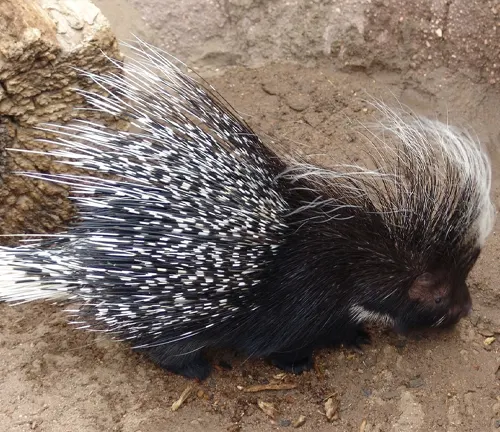
African Crested Porcupine
(Hystrix cristata)
Native to sub-Saharan Africa, this species is known for its impressive crest of quills along its back.
Cape Porcupine
(Hystrix africaeaustralis)
Endemic to southern Africa, the Cape Porcupine is the largest species of porcupine in Africa.
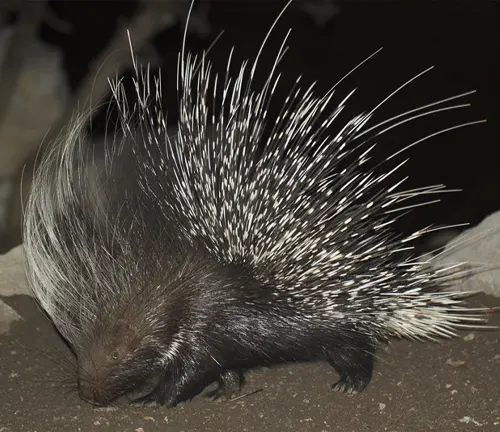
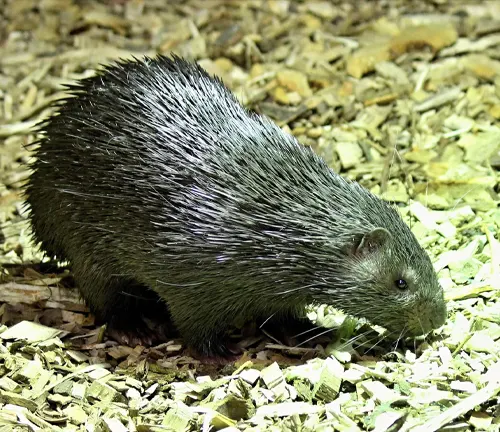
Philippine Porcupine
(Hystrix pumila)
Found in the Philippines, this species inhabits forests and grasslands across the archipelago.
Sunda Porcupine
(Hystrix javanica)
Native to the islands of Java, Sumatra, and Borneo in Southeast Asia, this species is also known as the Javan Porcupine.
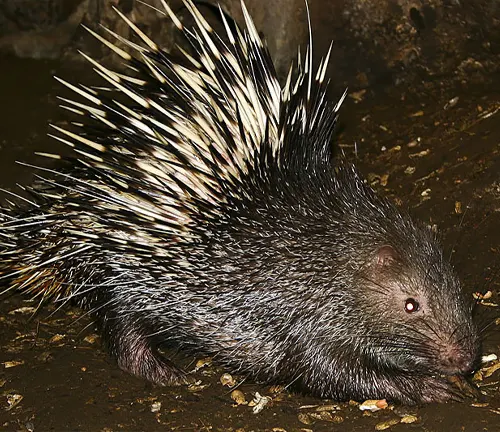
Frequently Asked Questions (FAQs)
- What is a Malayan porcupine?
A Malayan porcupine is a species of rodent native to various parts of Southeast Asia, known for its distinctive appearance and sharp quills. - What do Malayan porcupines eat?
Malayan porcupines are herbivores, feeding primarily on roots, tubers, fruits, and vegetation. - Where do Malayan porcupines live?
Malayan porcupines inhabit forested areas across Southeast Asia, including countries such as Thailand, Malaysia, Indonesia, and parts of India and China. - How big do Malayan porcupines get?
Malayan porcupines are typically medium-sized, ranging from 60 to 90 centimeters in length and weighing between 5 to 10 kilograms. - Do Malayan porcupines have predators?
Yes, Malayan porcupines have predators such as large carnivores including leopards, tigers, and pythons. - Are Malayan porcupines solitary animals?
Malayan porcupines are mostly solitary animals, although they may form small family groups or pairs during the breeding season. - How do Malayan porcupines defend themselves?
Malayan porcupines defend themselves by erecting and rattling their sharp quills when threatened. These quills can also detach upon contact, lodging themselves into the predator’s skin. - Do Malayan porcupines hibernate?
No, Malayan porcupines do not hibernate. They are active year-round and are most active during the night. - How long do Malayan porcupines live?
Malayan porcupines have a lifespan of around 12 to 15 years in the wild, although this can vary depending on factors such as predation and habitat quality. - Do Malayan porcupines have any cultural significance?
Yes, Malayan porcupines may hold cultural significance in some indigenous communities, where they are featured in folklore, traditional ceremonies, or believed to possess magical powers. - Can Malayan porcupines be kept as pets?
Keeping Malayan porcupines as pets is not recommended due to their specialized dietary and habitat requirements, as well as their potential to inflict injury with their quills. - What are the threats to Malayan porcupines?
Malayan porcupines face threats such as habitat loss due to deforestation, hunting for meat, and traditional medicine. Conservation efforts are needed to protect their populations and habitats.










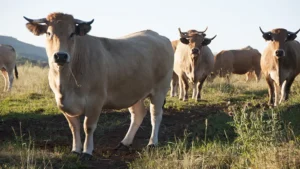


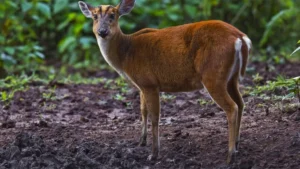
Leave your comment